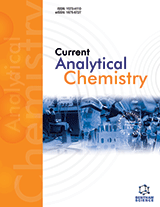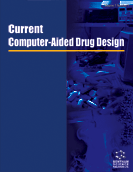摘要
世界上将近1%的人口患有精神分裂症。这种慢性精神障碍的药物在过去的半个世纪在治疗方面有很大的改善,但仍存在巨大的挑战,较新的非典型抗精神病药物效果并不理想。精神分裂症患者的阴性症状和认知功能障碍,极大地影响了整体的发病率,因此需要更好的治疗。一氧化氮(NO),脑内和细胞间的信使,参与精神分裂症的发病机制,所以过度的NO产生可能促进病理过程。这意味着减少氮活性可能有利于治疗,因此降低NO产生的一氧化氮合酶(NOS)抑制剂分子可能是新药开发的候选者。尽管这些新兴分子潜在的神经毒性和狭窄的治疗范围,本文批判性地回顾其研究进展。
关键词: 一氧化氮,一氧化氮抑制剂,精神分裂症,精神分裂症。
Current Medicinal Chemistry
Title:The Role of Nitric Oxide Synthase Inhibitors in Schizophrenia
Volume: 23 Issue: 24
Author(s): Nikolaos Pitsikas
Affiliation:
关键词: 一氧化氮,一氧化氮抑制剂,精神分裂症,精神分裂症。
摘要: Close to 1% of the world population suffer from schizophrenia. Current medications for this chronic mental disorder have greatly improved treatment over the last half century or more, but, the newer atypical antipsychotics have proven to be disappointing, and enormous challenges remain. The negative symptoms and cognitive dysfunction in schizophrenia which greatly affect overall morbidity call for better treatments. Nitric oxide (NO), an intra- and inter-cellular messenger in the brain, is involved in the pathogenesis of schizophrenia, so excessive NO production might contribute to the pathology. This implies that it might be useful to reduce nitrergic activity, so molecules aiming to decrease NO production such as NO synthase (NOS) inhibitors might be candidates. Here, I critically review advances in research on these emerging molecules which hold promise although a note of caution is required on account of their potential neurotoxicity and narrow therapeutic window.
Export Options
About this article
Cite this article as:
Nikolaos Pitsikas , The Role of Nitric Oxide Synthase Inhibitors in Schizophrenia, Current Medicinal Chemistry 2016; 23 (24) . https://dx.doi.org/10.2174/0929867323666160812151054
| DOI https://dx.doi.org/10.2174/0929867323666160812151054 |
Print ISSN 0929-8673 |
| Publisher Name Bentham Science Publisher |
Online ISSN 1875-533X |
 49
49 7
7
- Author Guidelines
- Bentham Author Support Services (BASS)
- Graphical Abstracts
- Fabricating and Stating False Information
- Research Misconduct
- Post Publication Discussions and Corrections
- Publishing Ethics and Rectitude
- Increase Visibility of Your Article
- Archiving Policies
- Peer Review Workflow
- Order Your Article Before Print
- Promote Your Article
- Manuscript Transfer Facility
- Editorial Policies
- Allegations from Whistleblowers
- Announcements
Related Articles
-
The Role of Clusterin in Carcinogenesis and its Potential Utility as Therapeutic Target
Current Medicinal Chemistry Modulation of Amyloid β Peptide1-42 Cytotoxicity and Aggregation in Vitro by Glucose and Chondroitin Sulfate
Current Alzheimer Research siRNA Delivery by Stimuli-Sensitive Nanocarriers
Current Pharmaceutical Design Pharmacological Applications of Diphenylamine and Its Derivative as Potent Bioactive Compound: A Review
Current Bioactive Compounds Possible Use of Autologous Stem Cell Therapies for Alzheimers Disease
Current Alzheimer Research Role of Environmental Contaminants in the Etiology of Alzheimer’s Disease: A Review
Current Alzheimer Research Current Status and Future Prospects of C1 Domain Ligands as Drug Candidates
Current Topics in Medicinal Chemistry Novel Histone Deacetylase Inhibitors for the Treatment of Pediatric Brain Tumors
Central Nervous System Agents in Medicinal Chemistry α-Synuclein and the Pathogenesis of Parkinsons Disease
Protein & Peptide Letters Atranorin – An Interesting Lichen Secondary Metabolite
Mini-Reviews in Medicinal Chemistry CHF5074 Protects SH-SY5Y Human Neuronal-like Cells from Amyloidbeta 25-35 and Tumor Necrosis Factor Related Apoptosis Inducing Ligand Toxicity In Vitro
Current Alzheimer Research Genetic and Modifying Factors that Determine the Risk of Brain Tumors
Central Nervous System Agents in Medicinal Chemistry Biomarker Assessment in Nutritional Modulation of Oxidative Stress-Induced Cancer Development by Lipid-Related Bioactive Molecules
Recent Patents on Anti-Cancer Drug Discovery The Impact of Tumor Physiology on Camptothecin-Based Drug Development
Current Medicinal Chemistry - Anti-Cancer Agents TRPC Channels and their Implications for Neurological Diseases
CNS & Neurological Disorders - Drug Targets LHON: Mitochondrial Mutations and More
Current Genomics A Cationic Gallium Phthalocyanine Inhibits Amyloid β Peptide Fibril Formation
Current Alzheimer Research Promising Targets in Anti-cancer Drug Development: Recent Updates
Current Medicinal Chemistry Strategies for the Biological Evaluation of Gold Anticancer Agents
Anti-Cancer Agents in Medicinal Chemistry Targeted Radiosensitization in Prostate Cancer
Current Pharmaceutical Design


























